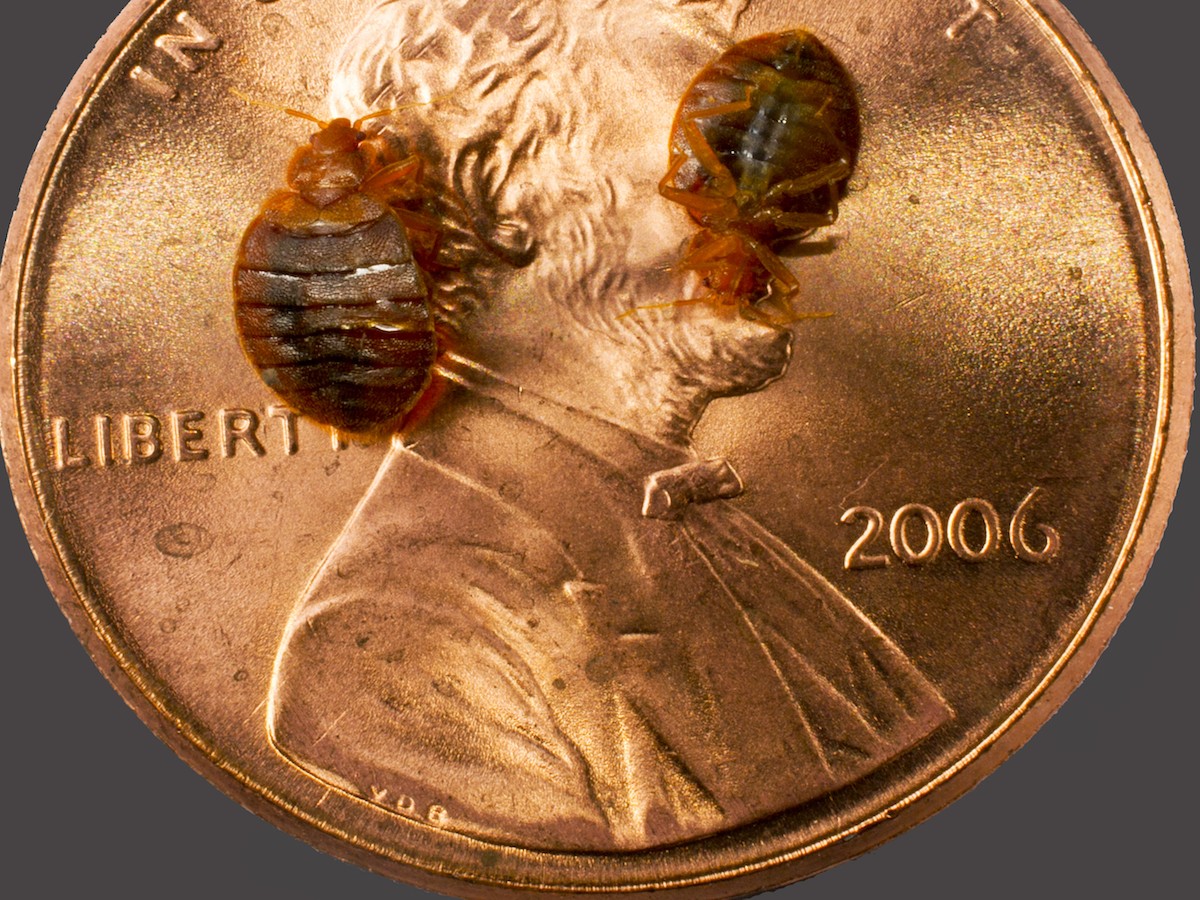Bed bugs are notorious pests that can cause significant distress and are notoriously difficult to eliminate once they infest a home. Found across the globe, including throughout the United States, these tiny creatures can infiltrate a wide range of environments, from the plush interiors of hotels to the more mundane settings of hospitals and even public transportation. Their ability to squeeze into incredibly tight spaces, thanks to their small size and flattened bodies, means they can hide in unexpected locations such as within couches, behind picture frames, and even nestled in electrical switch plates.
If you’re puzzled about how these unwelcome guests might have entered your home, keep reading to understand the common ways bed bug infestations begin.
The Hitchhiking Nature of Bed Bugs: Your Travel Companion
So, How Do Bed Bugs Start their journey into your living space? The most prevalent method is through hitchhiking. Bed bugs are expert travelers, easily latching onto belongings as you move from place to place. If you suddenly find yourself facing a bed bug problem in your home, and you’re unsure of the origin, it’s highly likely they hitched a ride. Common carriers include purses, suitcases, backpacks, and even clothing. Imagine you’ve been on public transportation, visited a hotel, or even a movie theater; unknowingly, you might have provided transport for these tiny pests. They can quickly crawl into your bags or onto your clothes, remaining unseen until they reach your home.
Secondhand Furniture: An Unintentional Bed Bug Delivery
Another common way bed bugs enter homes is through secondhand furniture. While purchasing used furniture is a sustainable and budget-friendly choice, it comes with potential risks, especially concerning bed bugs. Items like mattresses, box springs, sofas, and upholstered chairs can harbor existing bed bug populations. These items provide ample hiding spots within seams, folds, and crevices. Before bringing any secondhand furniture into your home, a meticulous inspection is crucial. Look for telltale signs of bed bugs, such as shed skins (cast skins), tiny white eggs, dark fecal spots, or the bed bugs themselves, which are small, reddish-brown insects. Utilize a bright flashlight and carefully examine seams, tufts, and folds in the fabric. Consider avoiding used mattresses and box springs altogether to minimize risk.
Travel and Lodging: High-Risk Scenarios for Picking Up Bed Bugs
Hotels, motels, hostels, and other lodging facilities are unfortunately prime locations for bed bug encounters. Due to the high turnover of guests, bed bugs can easily move from room to room and hitch rides with travelers. When traveling, vigilance is key to prevent bringing these unwanted souvenirs home. Upon arrival at your accommodation, before unpacking, conduct a thorough bed bug inspection. Focus on areas where bed bugs commonly hide: mattress seams, headboards, sofas, and chairs. It’s wise to keep your luggage in the bathroom or entryway during your inspection, as these areas are less likely to harbor bed bugs. Avoid placing suitcases directly on beds or upholstered furniture until you are confident the room is bed bug-free. If you find any signs of bed bug activity, immediately request a room change or consider moving to a different establishment. Upon returning home from your travels, inspect your luggage thoroughly. Washing all clothes you packed in hot water and drying them on high heat can effectively kill any bed bugs that may have hitched a ride.
Why Beds? Bed Bugs’ Preference for Sleeping Areas
Once bed bugs manage to get inside your house, they are naturally drawn to areas where humans spend extended periods, and beds are a prime target. Bed bugs are attracted to the carbon dioxide we exhale, our body heat, and our scent. Beds provide an ideal environment for them because they offer close proximity to a food source (us!) during the night. They seek out dark, secluded hiding places near beds, such as within mattress seams, bed frames, and headboards, allowing them to feed at night and retreat to safety during the day. While beds are a common infestation point, it’s important to remember that bed bugs can spread to other furniture throughout the home, including couches, chairs, and even bedside tables.
Taking Action Against Bed Bugs
If you suspect a bed bug infestation in your home, prompt action is essential. Contacting a qualified pest control professional is the most effective step. Bed bugs reproduce rapidly, so early intervention is crucial to prevent a full-blown infestation. A pest control expert can accurately identify the infestation, assess the extent of the problem, and recommend the most appropriate treatment plan. Attempting DIY bed bug control can often be ineffective and may prolong the problem.
To further protect your home, learning about bed bug prevention strategies is beneficial. Implementing proactive measures can significantly reduce the risk of future infestations. Consult resources on bed bug prevention techniques to safeguard your home and maintain a pest-free environment.
